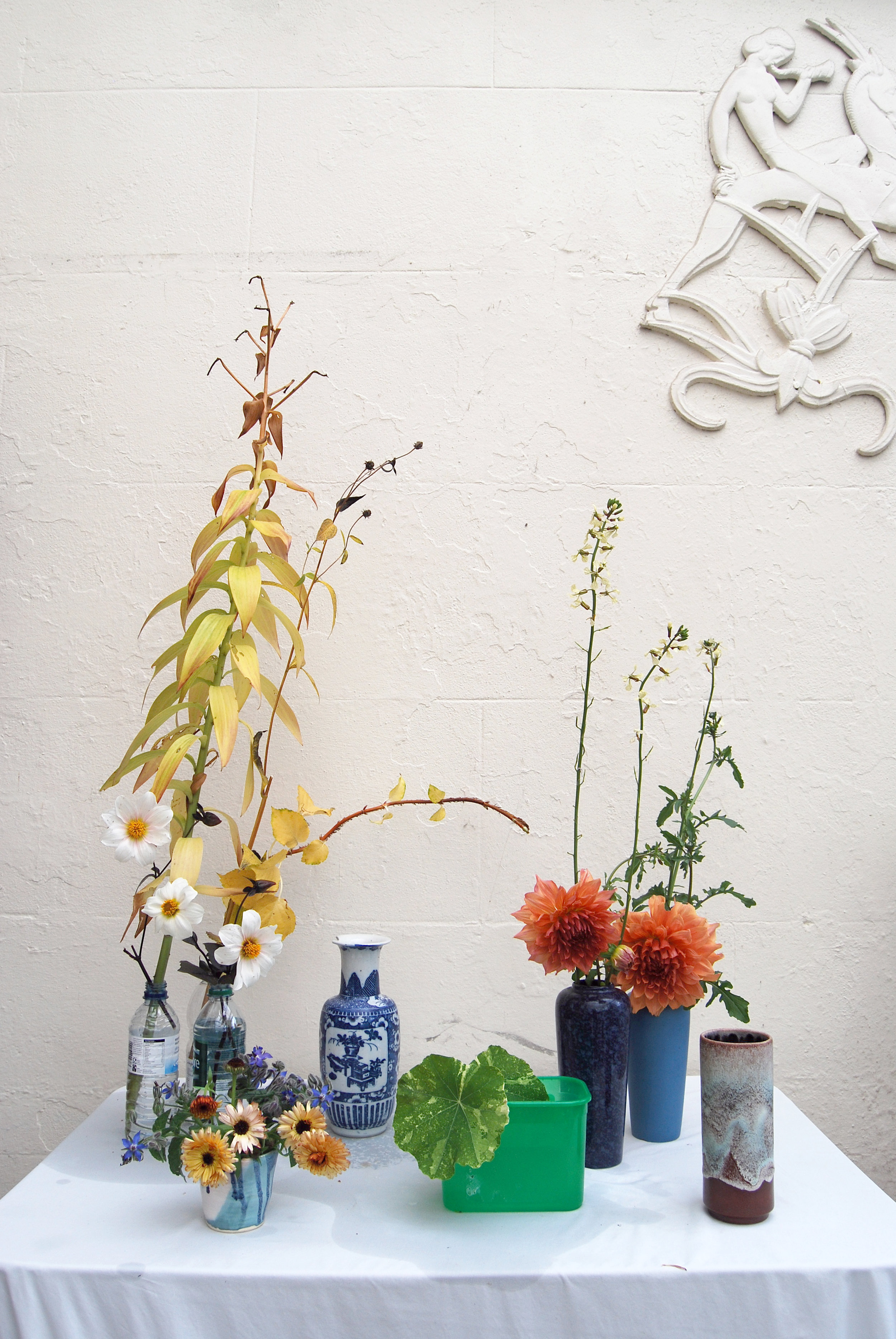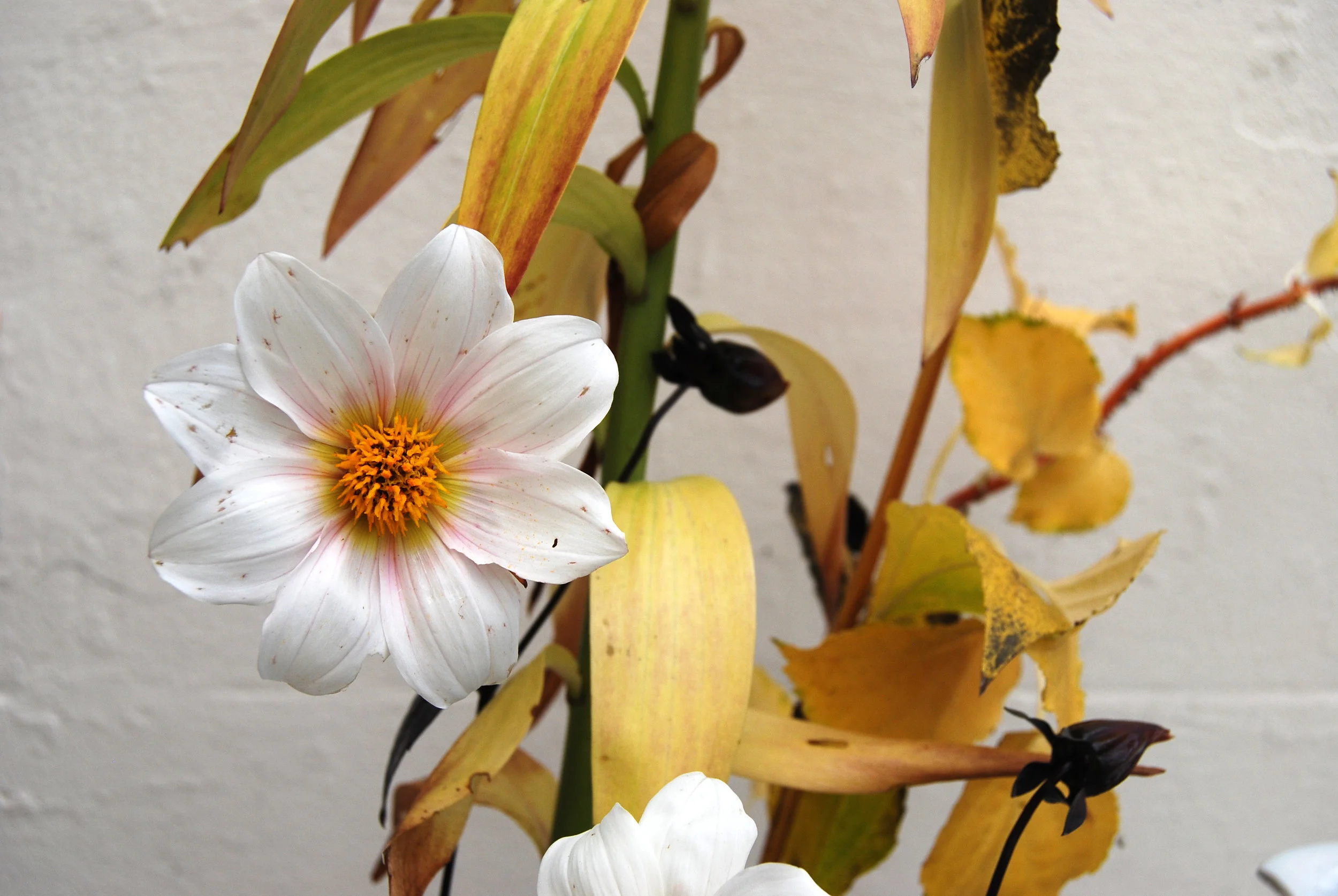Gathering flowers and foliage from outside for inside is always worthwhile, but never more so than in autumn. Trees and bushes clad in inconspicuous green all summer become extroverts, foliage exploding in fiery shades and dropping to reveal the skeleton beneath. Plants put on last-gasp growth spurts and annuals are more bountiful than ever in the weeks before they succumb to frost; all is as rangy and untrammelled as it’s ever going to be. Amid this gentle anarchy any qualms about spoiling the garden by taking from it have gone.
For me this habit of gathering is a necessity. With shorter days and precious little daylight in the evenings after work, it’s all too easy for the season to pass by, experienced vicariously as an Instagram fantasy. A bunch retrieved from the garden, allotment or on a weekend stroll to be enjoyed indoors through the rest of the week can be the best way of maintaining the IRL connection. If you lack the first two hunting grounds, the latter may seem to present a challenge if you don’t have a country estate at your disposal. Nonetheless it is possible in the city if you’re savvy.
While ‘urban foraging’ may be fraught with issues, if you’re not planning to eat the spoils you can relax a little more about who or what might have pissed on them, as well as more sinister forms of pollution. Other than this it’s a case of working out what to take and where it’s acceptable to take from. It’s probably problematic to pick bedded-out blooms or slice the head off a topiarised teddy bear in a council display but, in an era of widespread budget cuts, there are an increasing number of outdoor spaces left to their own devices. Look for brambles (wear gloves), berry-spangled ivy, architecturally interesting autumn-tinged weeds, seedheads, bolted crops and broken branches of the most pedestrian shrubs. All take on a sculptural presence when inside in a nice vessel against a white wall, with or without the addition of legit flowers from the florist.
In my local Glasgow park a resplendent Victorian rock garden, hitherto intensively maintained, has been abandoned to nature. The effect at the moment is beguiling, though valuable specimens like the Japanese maples are in danger of being squeezed out by more robust competitors like elder and bracken. Given this, curtailing a few of the interlopers can only be a positive intervention. Likewise, scrubby verges along cycle paths and old railway lines, brutally strimmed to the ground intermittently, seem like legitimate hunting grounds. Or the building you live in may have a neglected communal area to be looked at afresh.
If you keep your eyes peeled you might get lucky and find something special: this week a pal alerted me to a mixed pile of cactus limbs discarded from a municipal glasshouse. They will root readily in pots of gritty compost on a sunny window ledge, providing perfect plant escapism from the coming UK winter.





